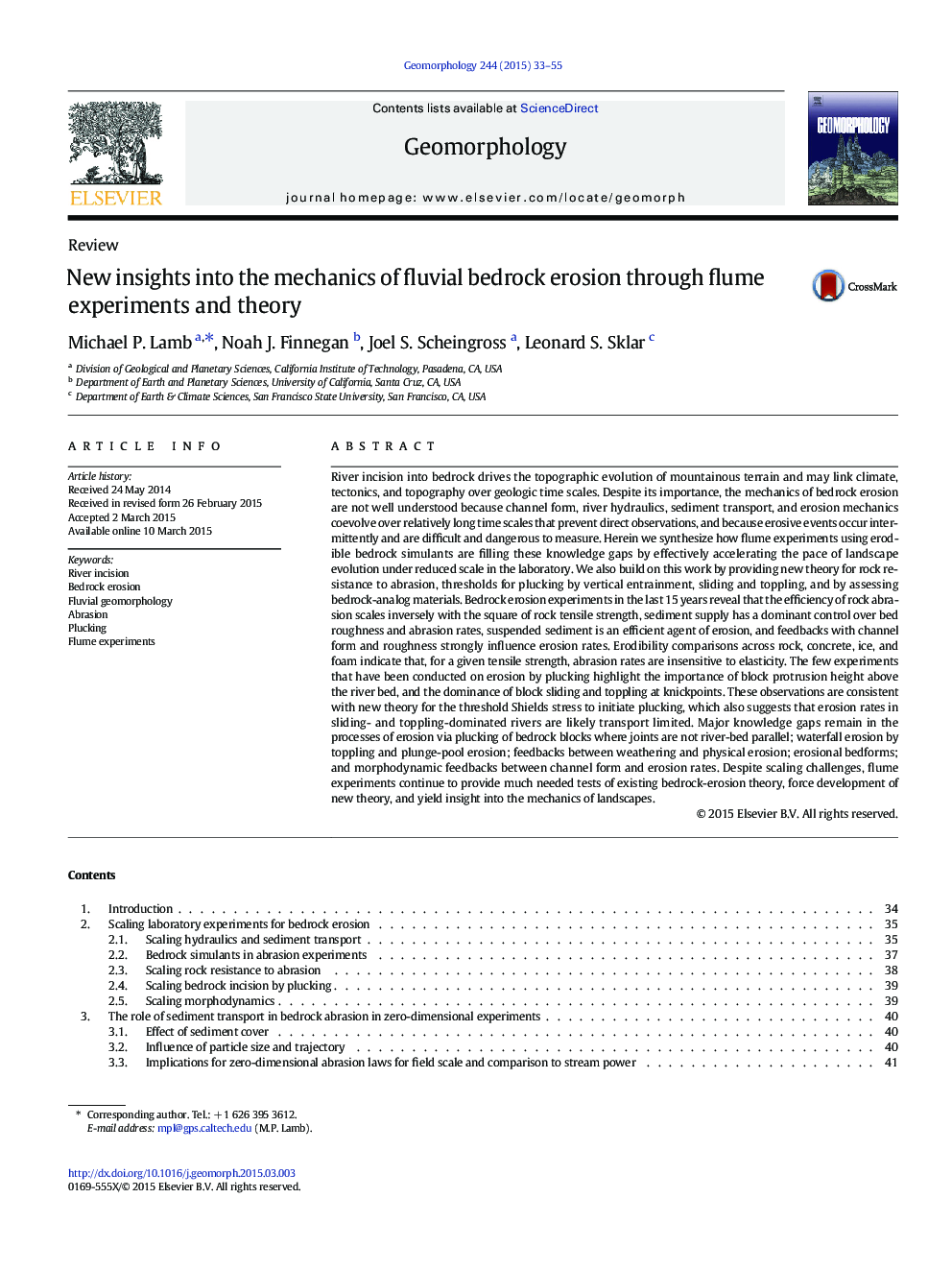| کد مقاله | کد نشریه | سال انتشار | مقاله انگلیسی | نسخه تمام متن |
|---|---|---|---|---|
| 4684180 | 1635405 | 2015 | 23 صفحه PDF | دانلود رایگان |
• Experiments test fluvial erosion models in ways impossible in natural rivers.
• Bedrock and a range of simulants abrade as the inverse of tensile strength squared.
• Suspension abrasion causes high erosion rates at high transport stages.
• Feedbacks between roughness, channel form and sediment supply control abrasion rate.
• Unified theories for plucking, sliding and toppling imply transport-limited erosion.
River incision into bedrock drives the topographic evolution of mountainous terrain and may link climate, tectonics, and topography over geologic time scales. Despite its importance, the mechanics of bedrock erosion are not well understood because channel form, river hydraulics, sediment transport, and erosion mechanics coevolve over relatively long time scales that prevent direct observations, and because erosive events occur intermittently and are difficult and dangerous to measure. Herein we synthesize how flume experiments using erodible bedrock simulants are filling these knowledge gaps by effectively accelerating the pace of landscape evolution under reduced scale in the laboratory. We also build on this work by providing new theory for rock resistance to abrasion, thresholds for plucking by vertical entrainment, sliding and toppling, and by assessing bedrock-analog materials. Bedrock erosion experiments in the last 15 years reveal that the efficiency of rock abrasion scales inversely with the square of rock tensile strength, sediment supply has a dominant control over bed roughness and abrasion rates, suspended sediment is an efficient agent of erosion, and feedbacks with channel form and roughness strongly influence erosion rates. Erodibility comparisons across rock, concrete, ice, and foam indicate that, for a given tensile strength, abrasion rates are insensitive to elasticity. The few experiments that have been conducted on erosion by plucking highlight the importance of block protrusion height above the river bed, and the dominance of block sliding and toppling at knickpoints. These observations are consistent with new theory for the threshold Shields stress to initiate plucking, which also suggests that erosion rates in sliding- and toppling-dominated rivers are likely transport limited. Major knowledge gaps remain in the processes of erosion via plucking of bedrock blocks where joints are not river-bed parallel; waterfall erosion by toppling and plunge-pool erosion; feedbacks between weathering and physical erosion; erosional bedforms; and morphodynamic feedbacks between channel form and erosion rates. Despite scaling challenges, flume experiments continue to provide much needed tests of existing bedrock-erosion theory, force development of new theory, and yield insight into the mechanics of landscapes.
Journal: Geomorphology - Volume 244, 1 September 2015, Pages 33–55
